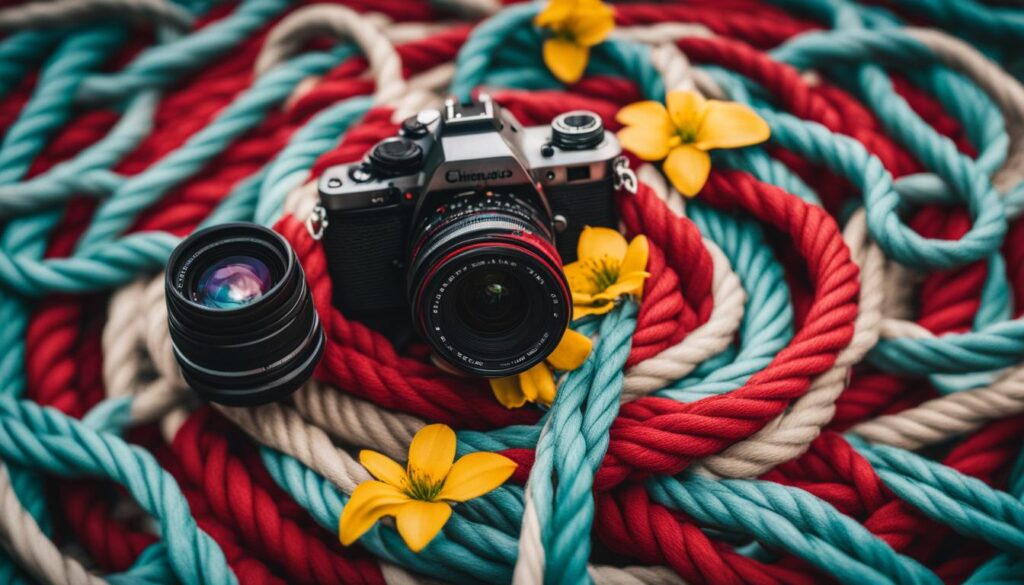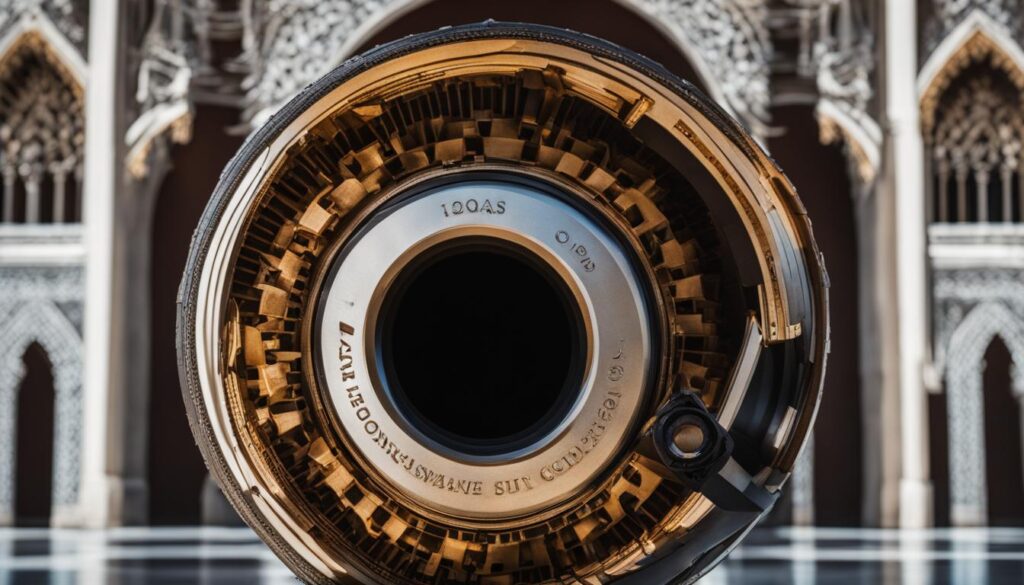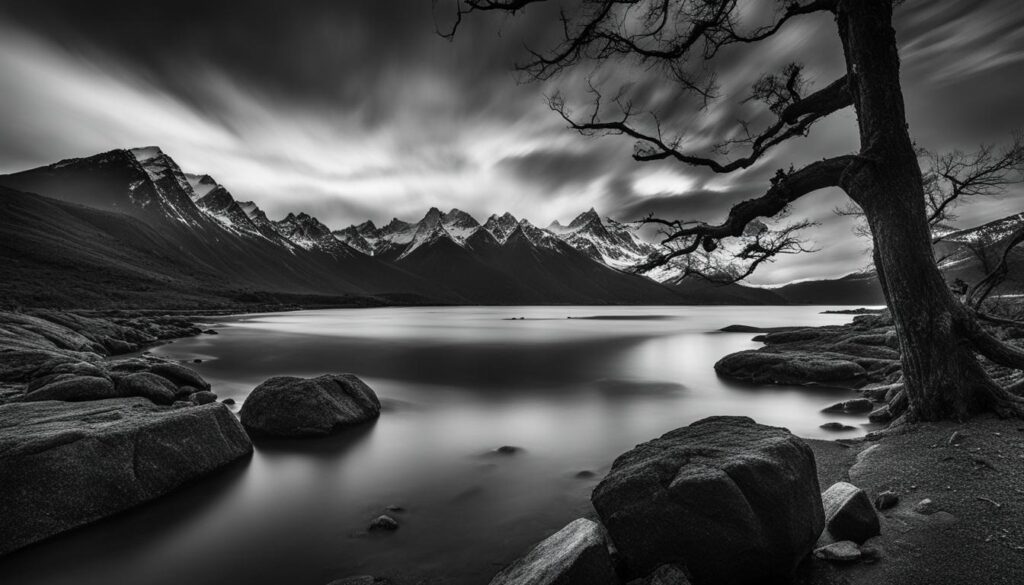We may earn money or products from the companies mentioned in this post.
If you’re a photographer looking to take your online presence to the next level, photography blogging is a great way to start. Not only can it help you build your brand and connect with potential clients, but it also allows you to showcase your work and share your creative insights with a wider audience.
In this guide, we’ll explore the basics of photography blogging and provide you with essential tips and tricks to help you create a successful blog. We’ll also discuss the importance of having a well-designed photography website to showcase your work effectively.
Whether you’re new to photography blogging or a seasoned pro, this guide will provide you with valuable insights to grow your online presence and achieve your goals.
Key Takeaways
- Photography blogging is a great way to showcase your work and build your online presence.
- A well-designed photography website is essential for effective showcasing of your work.
- This guide will provide you with essential tips and tricks for successful photography blogging.
Why Photography Blogging Matters
Photography blogging has become increasingly popular over the past few years. With the rise of social media and online platforms, photographers now have the opportunity to showcase their work and share their experiences with a broader audience. But why does photography blogging matter, and how can it benefit photographers?
A photo blog is an excellent way for photographers to create a dedicated online presence, showcase their work, and create a community of like-minded individuals. It allows photographers to connect with potential clients, share their knowledge and expertise, and inspire others with their work.
The Benefits of Photography Blogging
One of the main benefits of photography blogging is the ability to increase your online visibility and reach a wider audience. By creating valuable and engaging content, you can attract more visitors to your website and build a loyal following of readers.
Having a dedicated photo blog also provides you with the opportunity to establish yourself as an authority in your field. By sharing your knowledge, experience, and expertise, you can build a reputation as a trusted source of information and inspiration for other photographers.
Creating a Community
Another advantage of photography blogging is that it allows you to connect with a community of like-minded individuals. By engaging with other photographers, you can learn from their experiences, share your own insights, and build a network of contacts that can help you grow your business.
Additionally, creating a community around your photo blog can also help you reach a broader audience. By encouraging your readers to share your content with their followers, you can increase your reach and attract new visitors to your blog.
Essential Tips for Successful Photography Blogging
Creating a photography blog is an excellent way to showcase your work and attract potential clients. However, to succeed in the world of photography blogging, you need to pay attention to several factors that can make or break your blog’s success. In this section, we will explore essential photography blogging tips and tricks that can help you build a successful photography blog.
1. Create Compelling and Visually Appealing Content
The first and most crucial aspect of photography blogging is to create compelling and visually appealing content. Your blog should showcase your best photos, and each post should tell a unique story. Avoid posting random, low-quality images, as they can harm your blog’s reputation. Instead, focus on creating high-quality visual content that resonates with your audience.
2. Optimize Your Blog for Search Engines
Search engine optimization (SEO) is critical to ensure your photography blog ranks high in search results. Use relevant keywords in your blog titles and meta descriptions to attract more traffic to your blog. Additionally, optimize your blog’s loading speed, use alt tags for images, and make your blog mobile-friendly to improve your blog’s search engine ranking.
3. Promote Your Photography Blog through Various Channels
Promoting your photography blog is essential to attract more readers and followers. Share your blog posts on social media platforms, such as Facebook, Instagram, and Twitter, to reach a wider audience. Additionally, engage in online photography communities to connect with other photographers and promote your blog.
4. Engage and Grow Your Audience through Storytelling and Effective Communication
Engaging with your audience is critical to building a successful photography blog. Use storytelling techniques to make your blog posts more engaging and relatable. Respond to your readers’ comments and feedback promptly, and encourage them to share their thoughts and opinions. Additionally, provide valuable insights and tips that can benefit your readers and establish your expertise.
5. Leverage the Power of Video Content
Video content is becoming increasingly popular, and incorporating video content into your photography blog can improve your blog’s engagement and visibility. Consider creating video tutorials on photography tips and tricks or showcasing your creative process to attract and retain more followers.
By following these essential photography blogging tips and tricks, you can build a successful photography blog that attracts a loyal following and helps you showcase your work to a wider audience.
Enhancing Your Photography Blog with Tutorials and Guides
Photography tutorials and guides are valuable resources that can enhance your photography blog’s quality and appeal. They are educational tools that can attract a wider audience and showcase your expertise as a photographer. Incorporating tutorials and guides into your photography blog can also help establish your brand as a reliable source of information and inspiration in the photography community.
Creating Valuable and Engaging Tutorials
When creating photography tutorials for your blog, it’s important to keep in mind your audience’s needs and skill level. Start by brainstorming ideas for tutorials that align with your niche and expertise. You can also consider incorporating feedback and requests from your readers to create valuable and engaging content.
Example: If your photography blog is about portrait photography, you can create a tutorial on how to take flattering headshots or how to pose for a family portrait.
When designing your tutorial content, make sure to use clear and concise language and provide step-by-step instructions that are easy to follow. You can also include visual aids, such as screenshots or diagrams, to enhance the learning experience.
Another effective technique is to add a personal touch to your tutorials by sharing your own experiences and insights. This not only makes your tutorials more relatable but also helps establish a stronger connection with your audience.
Crafting Informative and Engaging Guides
Like tutorials, photography guides are informative resources that provide valuable insights and tips on various topics or techniques. They can be comprehensive guides that cover multiple aspects of photography, such as gear, lighting, and composition. Alternatively, they can be topic-focused guides that provide in-depth information on specific subjects, such as macro photography or astrophotography.
When creating guides for your photography blog, ensure that they are well-researched and provide unique and valuable information. Use a clear and concise writing style and include visual aids, such as infographics or charts, to present the information in an engaging and informative way.
Example: You can create a guide that covers the different types of lenses used in photography and their respective advantages and disadvantages. Alternatively, you can create a guide on how to capture stunning landscape photography, covering topics such as composition, lighting, and gear.
Conclusion
Photography blogging can be a rewarding and fulfilling experience for photographers who are looking to build their online presence and connect with a wider audience. By following the essential tips and tricks shared in this guide, you can master the art of photographic blogging and create a compelling and visually appealing photography blog that resonates with your readers.
Remember, photographic blogging is a continuous learning process that requires dedication, experimentation, and commitment. By staying true to your passion for photography and applying the tips shared in this guide, you can enhance your photography blog and achieve your goals.
The Importance of Photography Blogging
As we explored in Section 2, photography blogging matters because it can help you establish your brand, connect with potential clients and fellow photographers, and showcase your work effectively. A dedicated photography blog can also serve as a platform for you to share your unique perspectives, insights, and experiences, making it a valuable resource for your readers.
Essential Tips for Successful Photography Blogging
In Section 3, we discussed the importance of creating compelling content, optimizing your blog for SEO, and promoting your photography blog through various channels. By following these tips and techniques, you can attract and engage your audience and build a strong online presence.
Enhancing Your Photography Blog with Tutorials and Guides
As we explored in Section 4, incorporating photography tutorials and guides into your photography blog can be a great way to provide educational value to your readers and establish your expertise. By creating high-quality tutorials and guides that resonate with your audience, you can attract a wider following and elevate your photography blog’s reputation.
We hope this guide has provided you with valuable insights and tips for mastering the art of photographic blogging. Remember to stay true to your passion for photography and continue to experiment and learn in your journey to becoming a successful photography blogger.
FAQ
What is photography blogging?
Photography blogging is the practice of creating and maintaining a blog dedicated to photography. It involves sharing your own photographs, writing about photography-related topics, and engaging with a community of fellow photographers and enthusiasts.
Why should photographers consider blogging?
Photography blogging offers several benefits such as increasing online visibility, building a personal brand, and establishing credibility as a photographer. It also provides a platform to showcase your work, share your knowledge and experiences, and connect with potential clients and collaborators.
How can I start a photography blog?
Starting a photography blog is relatively simple. You need to choose a blogging platform, select a domain name, and set up your blog. From there, you can begin creating content, uploading your photographs, and customizing your blog’s design to reflect your unique style and branding.
How often should I update my photography blog?
While there are no strict rules, it is generally recommended to update your photography blog consistently and regularly. This helps to keep your audience engaged and encourages them to return for new content. Aim for a posting schedule that is manageable for you, whether it’s once a week, bi-weekly, or once a month.
How can I promote my photography blog?
There are several ways to promote your photography blog. Utilize social media platforms to share your blog posts and engage with your audience. Collaborate with other bloggers or photographers to cross-promote each other’s work. Additionally, optimize your blog for search engines by incorporating relevant keywords and metadata.
Can I monetize my photography blog?
Yes, you can monetize your photography blog in various ways. You can display advertisements, participate in affiliate marketing programs, offer photography services or products, and even sell prints or digital downloads of your photographs. However, it’s important to strike a balance between monetization and providing valuable content to your audience.
Affiliate Disclosure: This post may contain affiliate links. If you purchase through our link, we may receive a small commission, but at no additional cost to you. For more information, please see our Disclosure statement.



